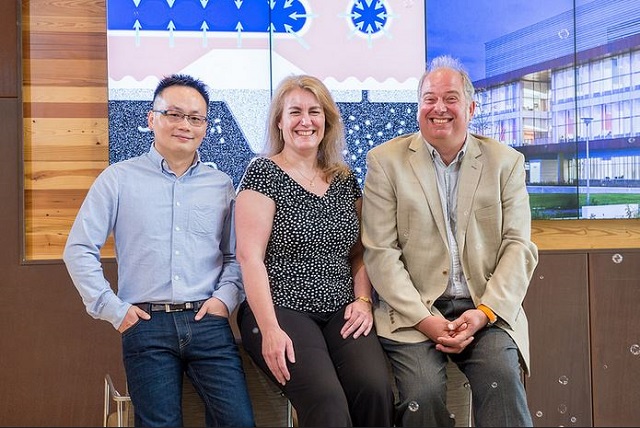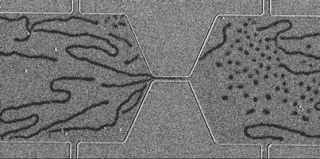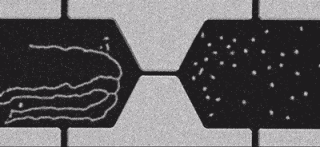Jun 16 2015
 Photo by Mark Lopez/Argonne National Laboratory.
Photo by Mark Lopez/Argonne National Laboratory.
Researchers from the U.S. Department of Energy’s (DOE) Argonne National Laboratory (Argonne) and the University of California, Los Angeles (UCLA) have developed an innovative, simple method for creation of magnetic skyrmion bubbles at room temperature conditions.
In this method, commonly available materials and simple equipment can be used for creation of these bubbles, which is considered to hold promise for more compact and energy-efficient electronics, such as computer memories.
In certain materials, tiny islands of magnetism form, and these are called as skyrmions. When a skyrmion is wrapped in the form of a sphere they do not unravel easily and they remain in the form of small packages. The magnetic fields of the sphere would point in all directions and this prevents their unraveling.
Scientists have discovered that electric currents could be used to nudge these skyrmions to move. This made the scientific community wonder if they could be used in computer memory to represent 0s and1s.
Presently, tiny transistors are used are used to represent 0s and1s. These work by stopping the electric current flow. However, further reduction of the size of transistors has been difficult to achieve and may not be possible. Researchers want to utilize physics phenomena for creating 0s and1s. This would not cause any change to the material’s atomic structure. A line of no skyrmion could be read as 0s, and similarly a line of skyrmions could be read as 1s.
However, expensive spin-polarized scanning tunneling microscopes are required for producing individual skyrmion bubbles, and they can be produced only at temperatures lower than -450°F. This is not possible in most laboratories, and even so in laptops and other such devices.
“Our new method is the simplest way to generate skyrmion bubbles thus far,” said Argonne postdoctoral researcher Wanjun Jiang, the first author on the study.
In order to blow the bubbles into a specific shape, a geometric structure was utilized, which led to the formation of a very thin film. The researchers utilized a three-layered structure from which a constricted wire was built. The three-layered structure was made up of tantalum-oxide and tantalum layers, and in between them a magnetic material was sandwiched.
A tiny channel has magnetic material on one of its sides, and long stripes of magnetic domains emerge in this material. Application of an electric current to these metal layers caused the long stripes to stretch through the channel, and on the other side of the channel they broke and formed tiny spherical skyrmion bubbles. This is similar to blowing soap bubbles.

The researchers applied a small current, and they were able to prod the skyrmions to move.

“These aren’t exotic materials—they’re widely used already in the magnetics industry,” said Argonne materials scientist Axel Hoffmann, the corresponding author on the paper.
He added that when compared to the electric current required in other experiments, this method required much less electric current.
“With this system we can explore many of the theoretical ideas on skyrmion physics that have been proposed over the past few years,” said Argonne physicist Suzanne G.E. te Velthuis, who co-authored the study.
“We think this method could apply to many more materials,” Jiang said. “This opens many new opportunities for the future.”
The study entitled Blowing Magnetic Skyrmion Bubbles has been published in the journal Science Express.